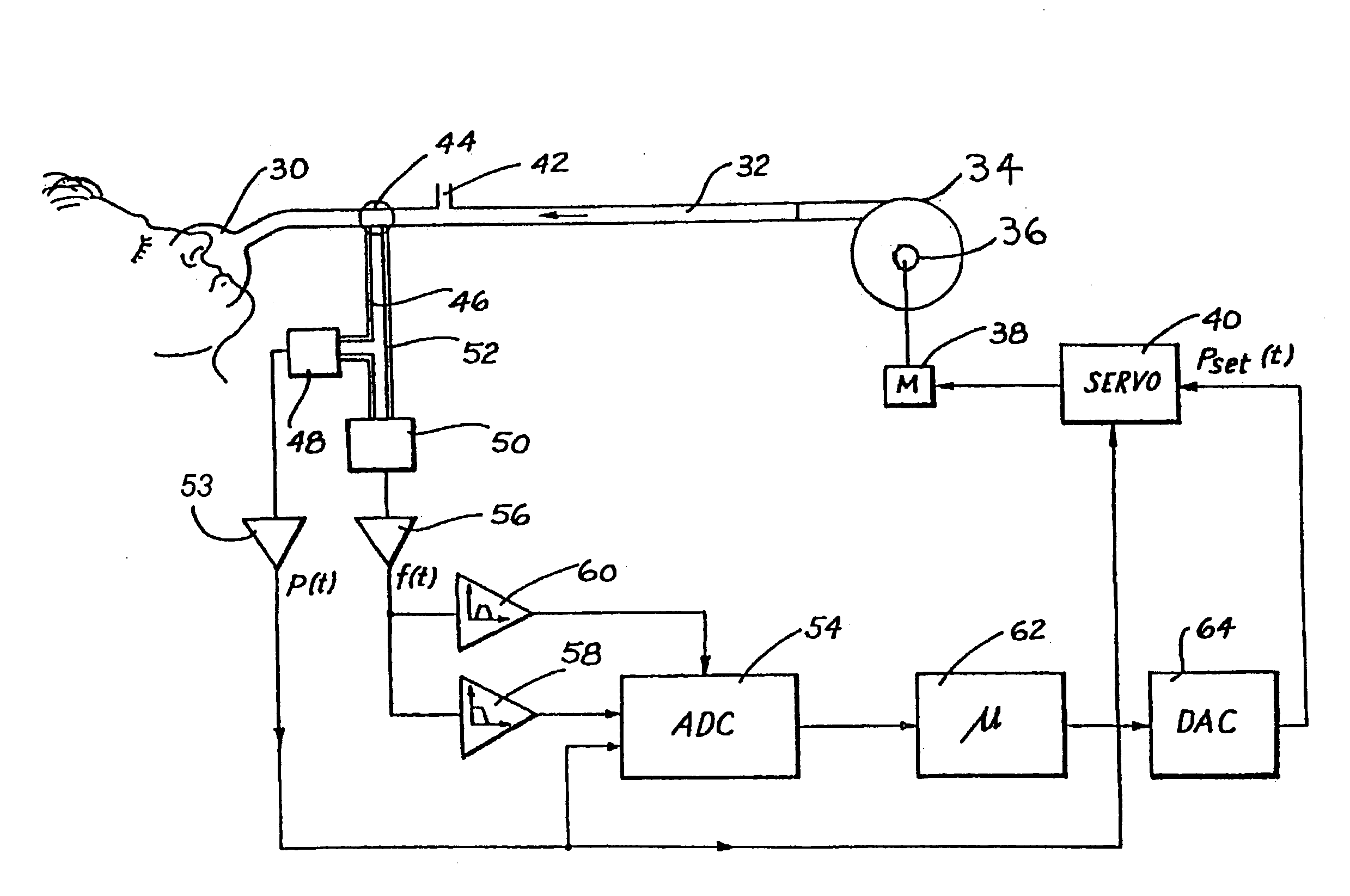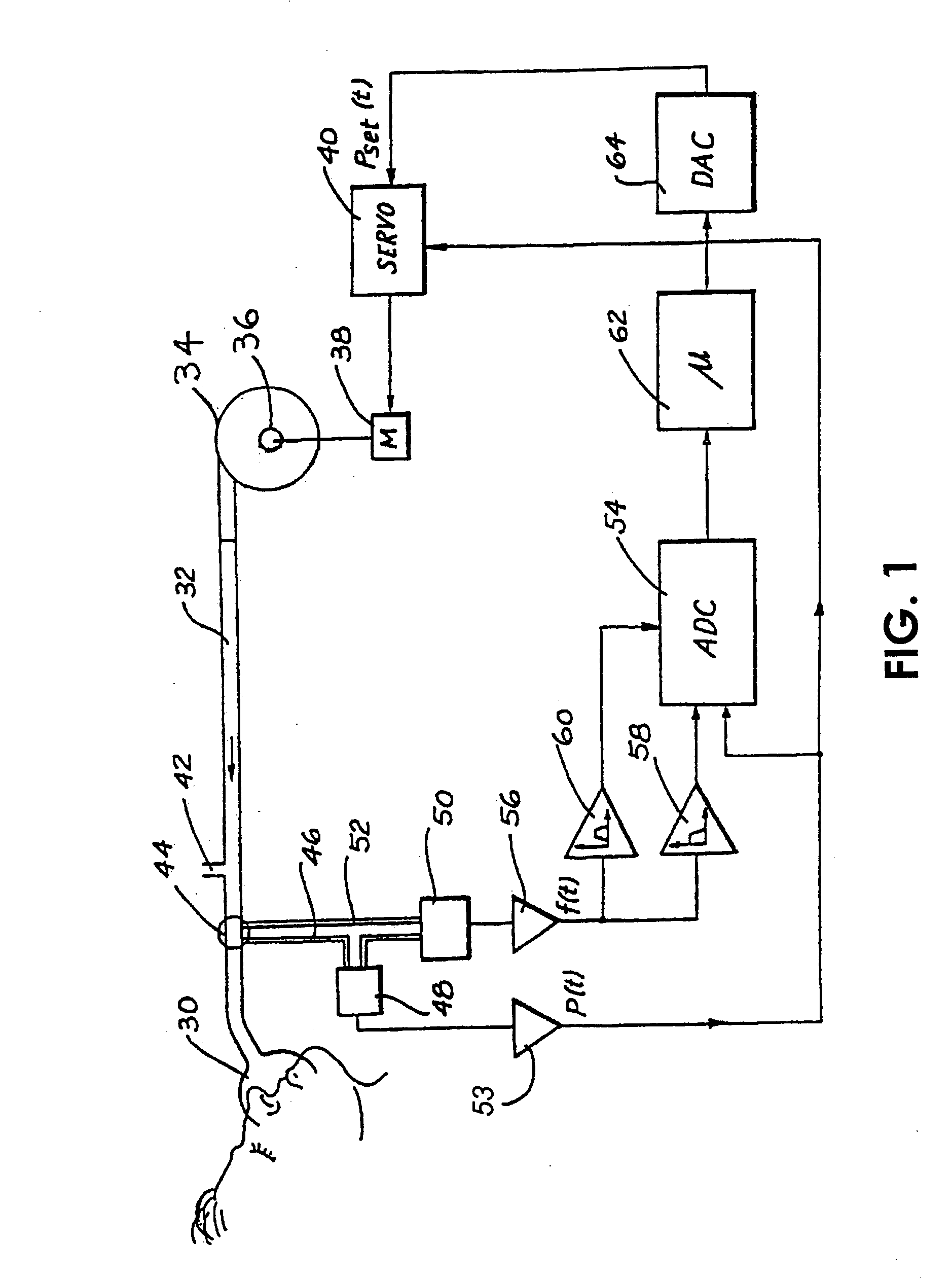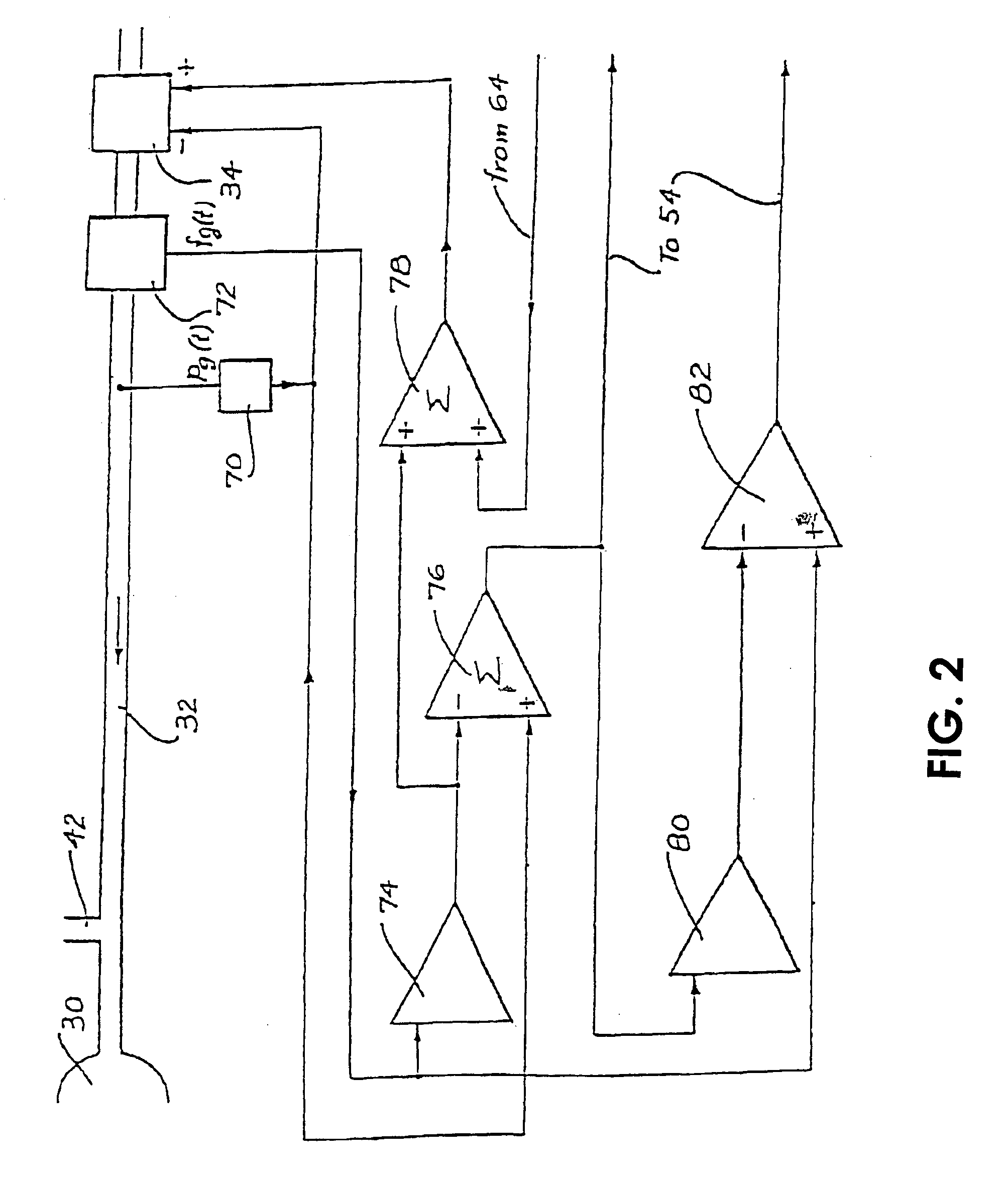Administration of CPAP treatment pressure in presence of apnea
a technology of positive airway pressure and apnea, which is applied in the direction of application, diagnostic recording/measuring, operating means/releasing devices of valves, etc., can solve the problems of decreased ventilation (hypopnea), decreased blood oxygenation, and disruption of sleep, so as to avoid falsely increasing the cpap pressure and increase the cpap pressure
- Summary
- Abstract
- Description
- Claims
- Application Information
AI Technical Summary
Benefits of technology
Problems solved by technology
Method used
Image
Examples
second embodiment
This second embodiment is implemented using the following pseudocode.
Set initial CPAP pressure to 4 cmH2O.Set apnea duration to zero Clear “start of breath” flag REPEAT every 1 / 50 of a second Sample mask pressure (in cmH2O), mask airflow (in L / sec), andsnore (1 unit corresponds loosely to a typical snore). Calculate mask leak as mask airflow low pass filtered with a timeconstant of 10 seconds. Adjust snore signal for machine noise. Check for presence and duration of any apnea. Check for start of breath. IF start of breath flag set: IF apnea duration greater than 10 seconds AND current CPAP pressure less than 10 cmH2O: Set delta pressure for this apnea to (10 − current CPAP pressure) / 6 times 8 cmH2O per minute of apnea duration. Add delta pressure for this apnea to total delta pressure due to apnea, and truncate to 16 cmH2O Reset apnea duration to zero. ELSE Reduce total delta pressure due to apnea with a time constant of 20 minute...
PUM
 Login to View More
Login to View More Abstract
Description
Claims
Application Information
 Login to View More
Login to View More - R&D
- Intellectual Property
- Life Sciences
- Materials
- Tech Scout
- Unparalleled Data Quality
- Higher Quality Content
- 60% Fewer Hallucinations
Browse by: Latest US Patents, China's latest patents, Technical Efficacy Thesaurus, Application Domain, Technology Topic, Popular Technical Reports.
© 2025 PatSnap. All rights reserved.Legal|Privacy policy|Modern Slavery Act Transparency Statement|Sitemap|About US| Contact US: help@patsnap.com



